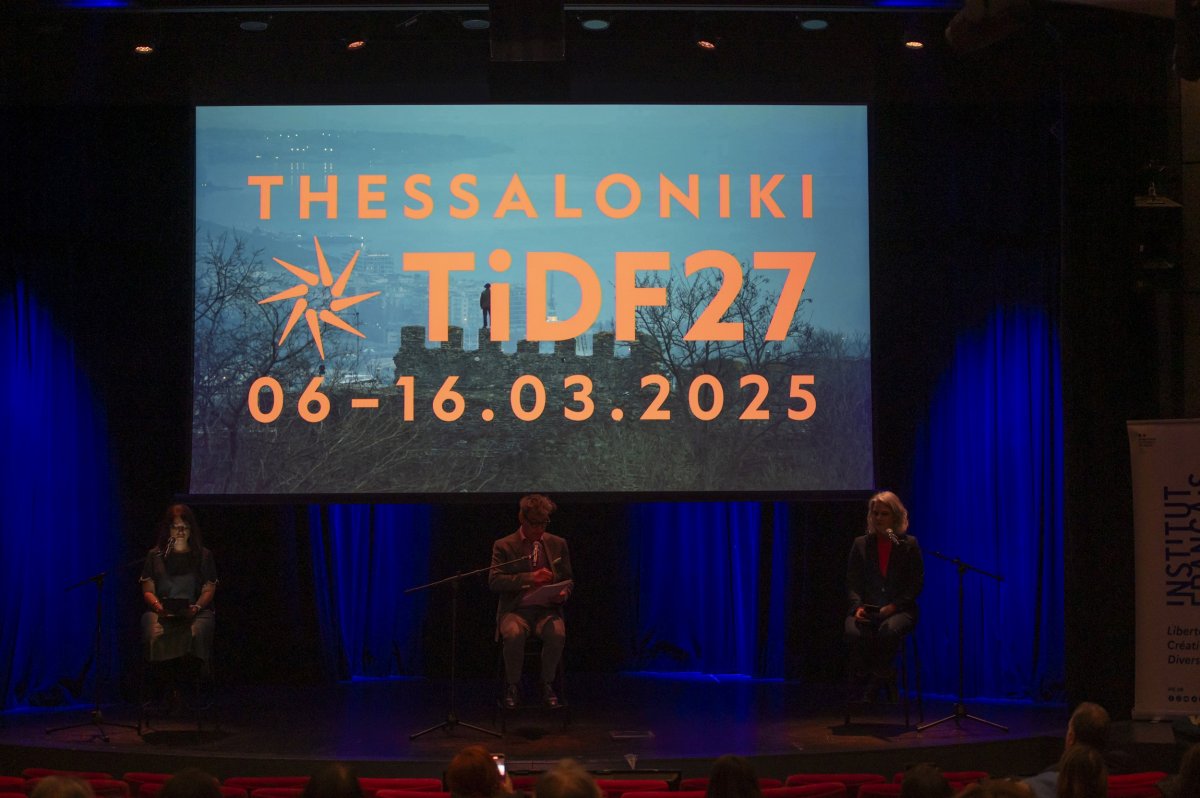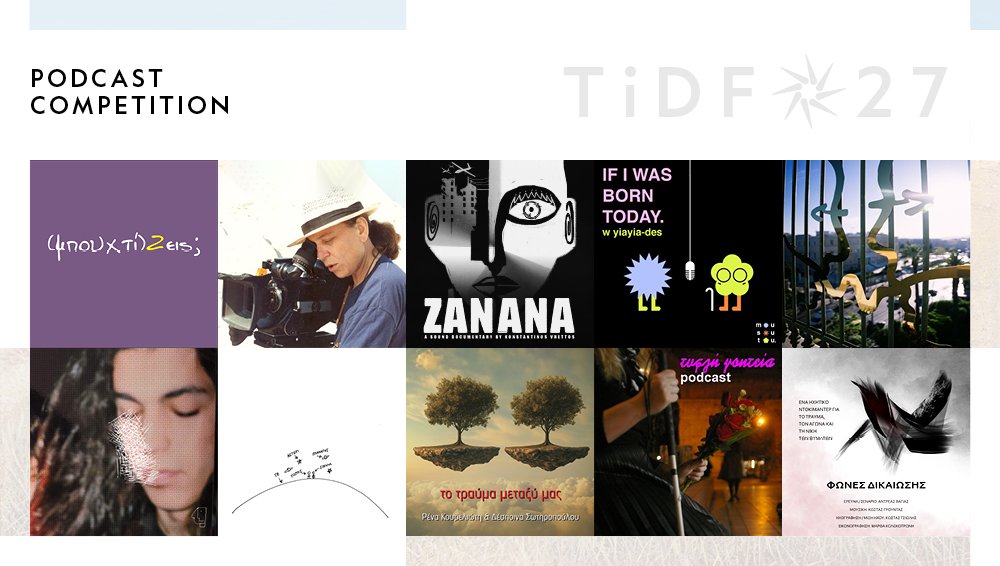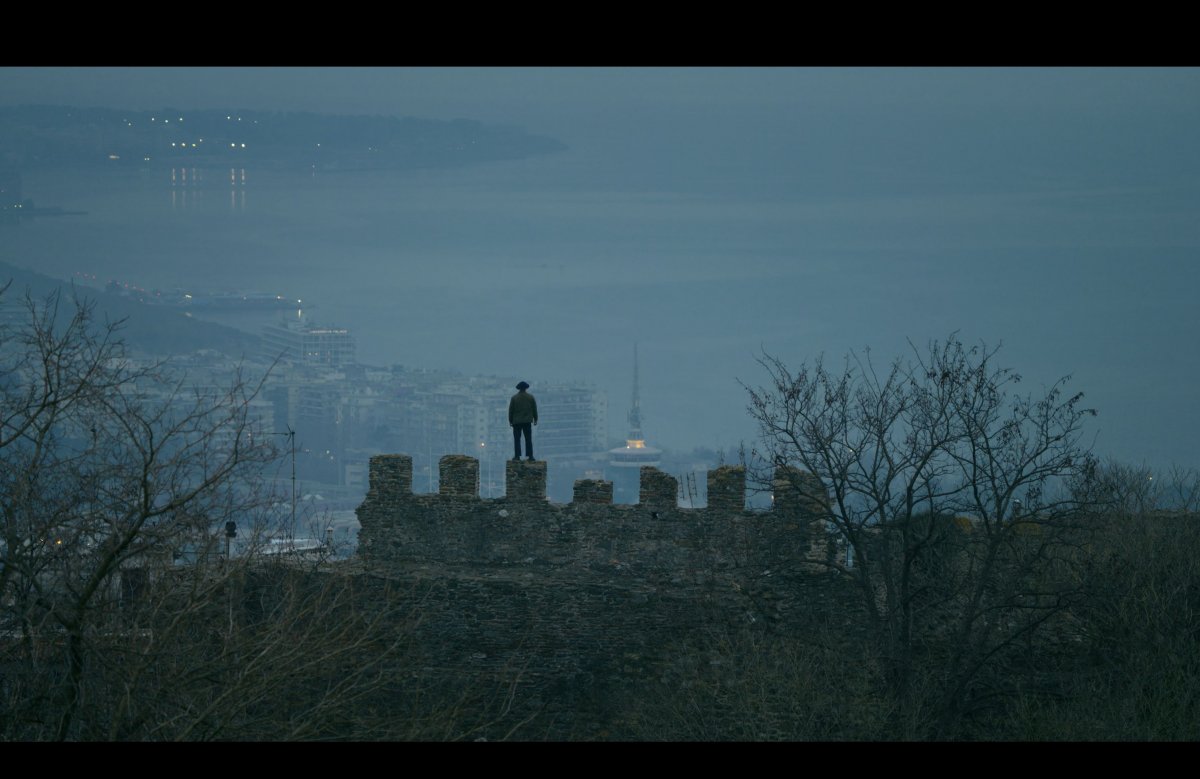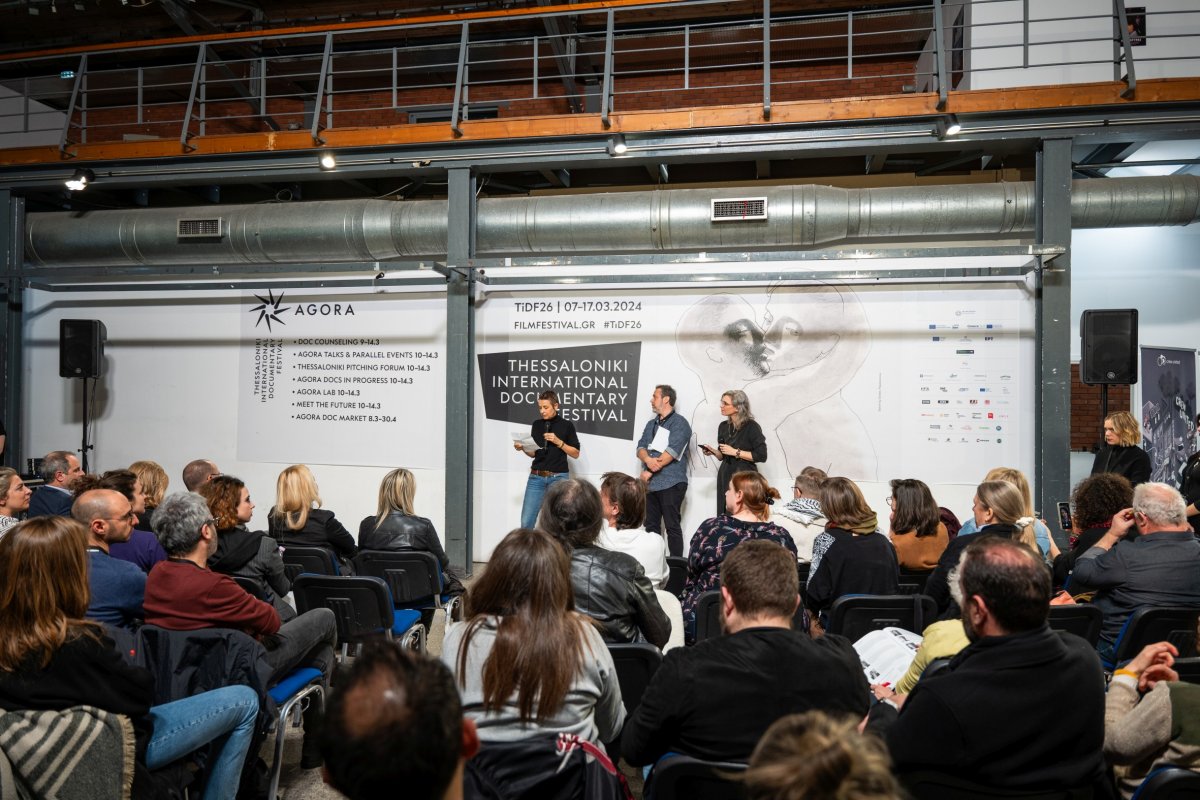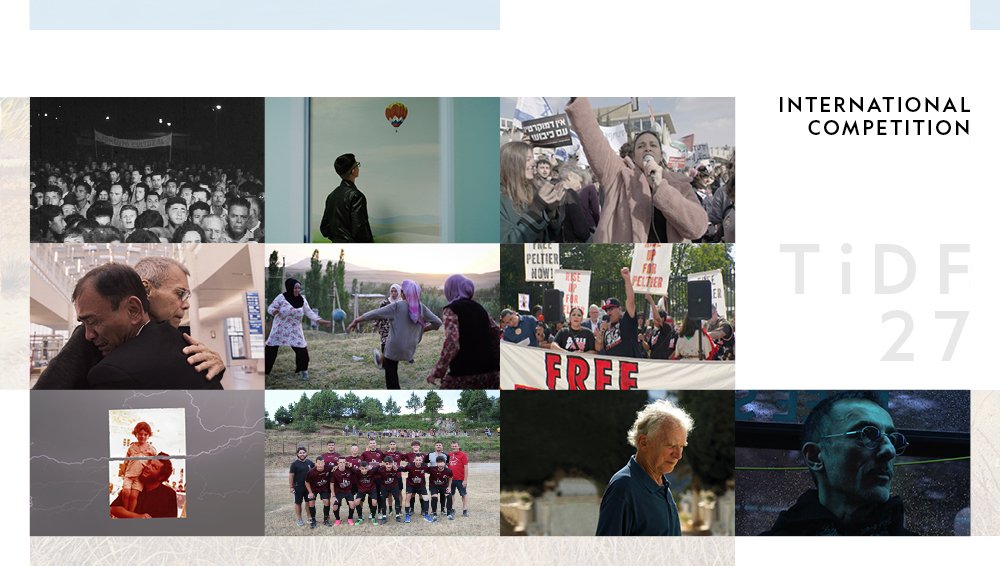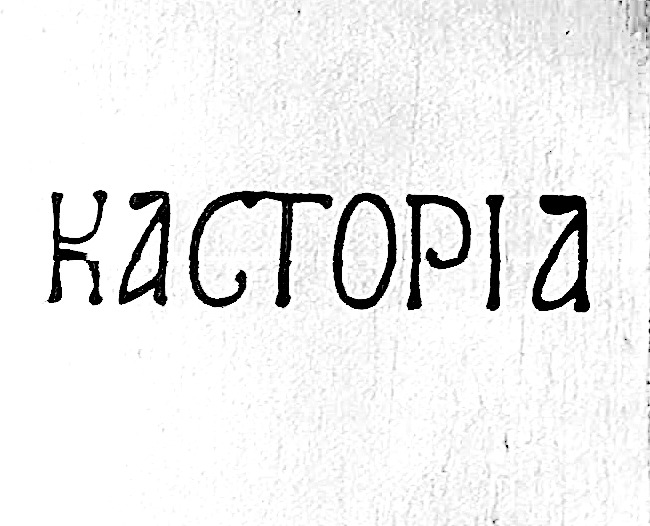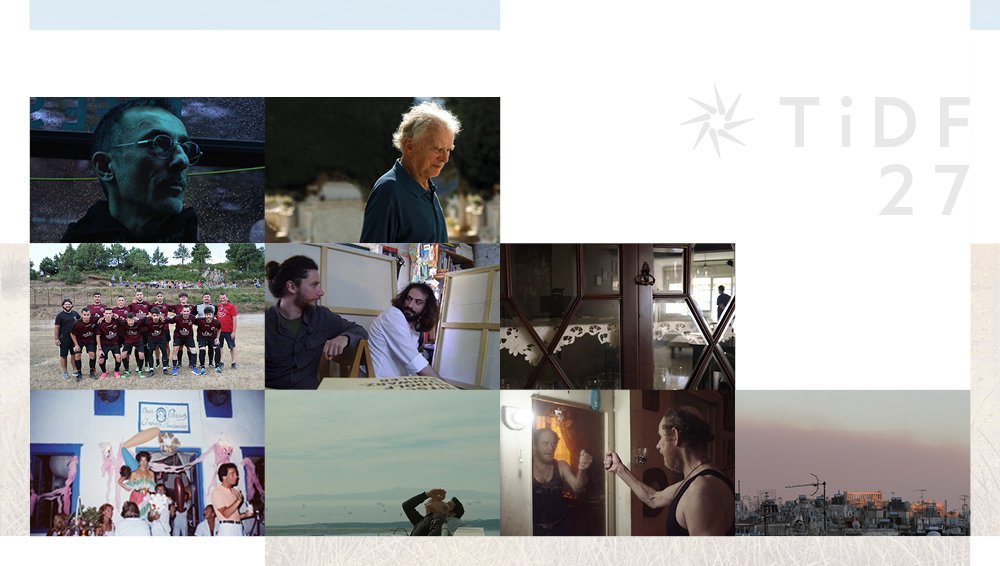A highly interesting open discussion with artist Marina Grzinic, Professor at the School of Fine Arts in Vienna and Researcher at the Institute of Philosophy, Slovenian Academy of Sciences and Arts, was held on Monday, November 16, in a warm and friendly atmosphere at the unique venue of Giahoudi Hamam, Louloudadika. The discussion was occassioned by the video installation of Marina Grzinic and collaborator Aina Smid, which takes place in the framework of 50th TIFF’s Experimental Forum section.
Marina Grzinic guided the audience through the exhibition in an original way, urging them to enter the exhibition space with food and drinks. The discussion commenced with a retrospective of the ‘80s and Slovenia’s punk movement, when Marina Grzinic and Aina Smid met. The two artists are counted among the most important contemporary figures in experimental video art. As Marina Grzinic pointed out, their work balances between conceptual and physical art, while heavily emphasizing theoretical background and political activism, without disregarding technological advancements in image making and the value of the medium. “Our works contain a great range of theoretical references and analyses of the image, and we also use excerpts of films invested with political and theoretical interest, which we remake in a new context in an effort to address social and political questions of the times,” she commented.
Key elements in the two artists’ engangement with video as an art form were Slovenia’s subculture movement of the 1980s, punk, the political situation in socialist Slovenia, the gay movement, and artists such as Rainer Verner Fassbinder, Dusan Macaveyev and Alexandr Petrovic - representatives of the Black Wave non-conformist movement. “We attempted to alienate ourselves from the artificial aesthetics of contemporary experimental artists. We wished to communicate with marginal art and movements in order to explore their nature and meaning by reassessing the norms of our times,” Ms Grzinic stressed.
Next, Marina Grzinic went on to analyze her works in order of appearance in the video installation in Giahoudi Hamam; she noted that they function as “an anthropological machine, depicting the place and time of their creation.” Talking about Bilocation (1990), Ms Grzinic revealed that it showcases footage from the revolt of Albanians in 1989 Kossovo against the Yugoslav Army, a body of material which has never been aired on Slovenian news. “When we received this material, we wondered what to do with it, because we were never engaged in documentary making. Using blue key technology, we projected the material on human bodies, simply because we considered it to be the ideal projection “locus,” as it pertained to human manipulation. This work not only attempts to analyze socialism, but steps even further back to fascism; we realized that the two political systems shared many affinities at the given time,” she underlined.
Marina Grzinic pointed out that together with Aina Smid they devoted the 1990s to warfare in the Balkan region. Her second work in the exhibition, Luna 10 (1994), has the war of Bosnia and Herzegovina as its subject matter, with reference to films by directors Zilnik, Pavlovic and Kusturica. “The cruellest aspect of the war was found in Bosnia of muslim women rapes and revival of concentration camps. We utilized information by amateur radio and films, because no mainstream media --not even CNN- broadcast war shots,” said Ms Grzinic, adding that by 1994 people had already witnessed the expansion of the internet, which to many signalled the end of video as a medium.
The third work of the exhibition, Retroavangarda (1997), as Marina Grzinic pointed out, examines the post-socialist era and refers to Rainer Verner Fassbinder films and Slovenian theoriticians, arguing that former Yugoslavia was in a position to appropriate ideological concepts as its raw material and transform them into art. “In the video, our characters are not humans, they lie in bed not making love but discussing theory. Moreover, we analyzed and reinvented a Turk immigrant taken from the Fassbinder’s feature film Fear Eats The Soul, taking a stance against the anti-racial ambience of the time. The work aims at connecting art groups that operated on former Yugoslavian territory,” she concluded.
Standardization and formalism in culture and art is elaborated in the fourth work by Marina Grzinic and Aina Smid, under the title Hi-Res (2006). “This work portrays images from 1997 accompanied by punk music tracks. We tried to address the question of how images lose their edge, how history loses its edge and how everything ends up in standardization,” she commented.
In summing up the analysis of the video-installation works, Marina Grzinic referred to Obsession (2008), which embarks on an examination of the consequences of formalism on knowledge, history, and education. “Capitalism and neoliberalism tend to draw our attention on a very limited range of artists, thus excluding anything else. In this work we have tried to explore the potential of the de-colonization of knowledge, by analyzing paradigms from Latin America and Africa, a still colonized territory. We wonder what the role of the European Union is, how knowledge can be liberated, how we can get rid of the colonization of knowledge, as well as what the role of experimental video is, suffering such attack,” Marina Grzinic concluded.




